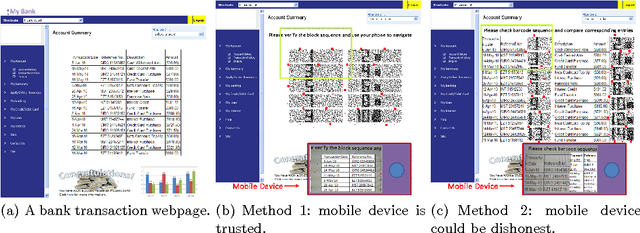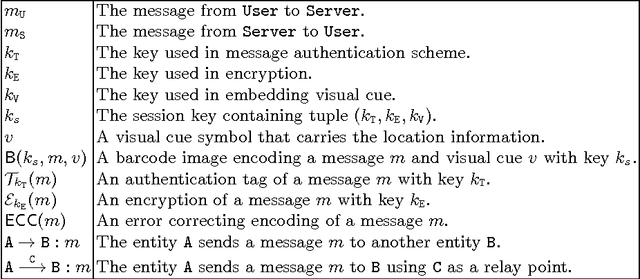Securing Interactive Sessions Using Mobile Device through Visual Channel and Visual Inspection
Paper and Code
Jul 08, 2010



Communication channel established from a display to a device's camera is known as visual channel, and it is helpful in securing key exchange protocol. In this paper, we study how visual channel can be exploited by a network terminal and mobile device to jointly verify information in an interactive session, and how such information can be jointly presented in a user-friendly manner, taking into account that the mobile device can only capture and display a small region, and the user may only want to authenticate selective regions-of-interests. Motivated by applications in Kiosk computing and multi-factor authentication, we consider three security models: (1) the mobile device is trusted, (2) at most one of the terminal or the mobile device is dishonest, and (3) both the terminal and device are dishonest but they do not collude or communicate. We give two protocols and investigate them under the abovementioned models. We point out a form of replay attack that renders some other straightforward implementations cumbersome to use. To enhance user-friendliness, we propose a solution using visual cues embedded into the 2D barcodes and incorporate the framework of "augmented reality" for easy verifications through visual inspection. We give a proof-of-concept implementation to show that our scheme is feasible in practice.
 Add to Chrome
Add to Chrome Add to Firefox
Add to Firefox Add to Edge
Add to Edge